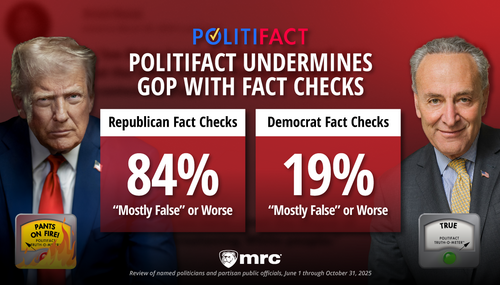What do you do when you're the Associated Press, aka the Administration's Press, and you're trying to do your level best to described a floundering economy without incurring the wrath of the Obama administration? You search for positive-sounding words to describe what is in reality a marginal situation.
The AP seems to have settled on "steady" and "steadily."
Following disappointing reports from high-end retailer Macy's on Wednesday and deep-discounting Walmart on Thursday, the wire service's Christopher Rugaber and Anne D'Innocenzio accurately characterized the general situation, but then pulled out the S-word:
Bleaker outlooks at retailers like Wal-Mart and Macy's are raising doubts that consumers will spend enough in coming months to lift the still-subpar U.S. economy.
Though the economy is growing steadily, Americans are being hampered by weak pay, higher taxes and tepid hiring.
Going backwards, economic growth during the past three quarters has been an annualized 1.7%, 1.1%, and 0.1%. That's an average of less than 1%, and actual growth without annualization of 0.72%.
After factoring in population growth of about 0.55% during a typical nine-month period in the U.S. in recent years, that's less than 0.2% growth in real per-capita GDP, with the fourth quarter's 0.1% GDP growth clearly translating into a negative per-capita movement. "Steady," schmeady.
As I noted on Friday, it's more like "barely existing."
After the government's favorable initial unemployment claims report on Thursday, Ruguber used the S-word to describe job growth:
The number of Americans seeking unemployment benefits dropped 15,000 last week to a seasonally adjusted 320,000, the fewest since October 2007 - a sign of dwindling layoffs and steady if modest job growth.
... At the depth of the recession in March 2009, weekly applications for unemployment benefits numbered 670,000. They have fallen steadily ever since.
I doubt viewers of the following graph would use "fallen steadily" to describe behavior of claims since that March 2009 peak:
The red and green dots represent periods of almost eight and almost nine six months, respectively, where claims briefly dipped, headed back upward, and took a long time to come back down to where they had been before. The first of those two periods coincided with Joe Biden's busted prediction of a "recovery summer." "Steadily," schmeadily, Chris.
On Tuesday, the AP's Martin Crutsinger, in covering a reported 0.1% seasonally adjusted drop in manufacturing output, at least had the present pegged properly, directly contradicting the previously noted AP characterization of GDP growth. But then he promised steadiness to come:
Output at U.S. factories declined slightly in July, reflecting a drop in auto production. The decline was expected to be temporary given the banner sales year automakers are having.
Manufacturing output edged down 0.1 percent in July compared with June, the Federal Reserve reported Thursday. It was the first drop since declines in March and April.
... Stronger growth at U.S. factories could aid a sluggish economy that has turned lackluster over the past three quarters. The economy barely grew at an annual rate of 0.1 percent in the fourth quarter of last year and improved only modestly to annual rates of 1.1 percent in the January-March quarter and 1.7 percent in the April-June quarter.
Economists predict a stronger annual growth rate of around 2.5 percent in the second half of this year. They expect steady job gains, rising home sales and a brightening picture for Europe and other export markets to boost activity.
If job gains are steady, they seem to be more likely in the area of part-time and low-paid work, the type of work a reporter from a certain wire service described as "part-time service positions ranging from janitors to hamburger flippers, which offer few benefits, low pay, and no long-term security" back in the 1980s. The reporter? Rick Gladstone — of the Associated Press.
Once again, the AP wants readers to believe that meaningful improvement, if not prosperity, is just around the corner. How many times have these "it's going to get better" predictions fallen flat? I'd say almost as many times as they've been made since January 2009.
Cross-posted at BizzyBlog.com.





